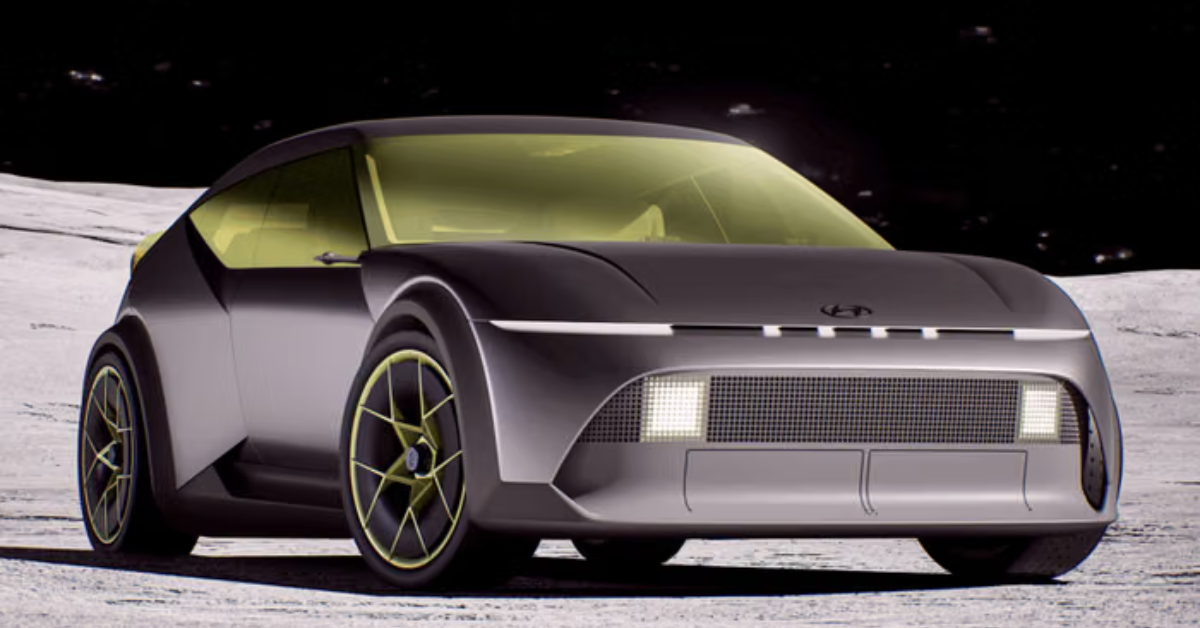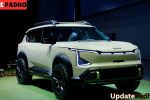The Munich Motor Show 2025 has once again proven to be a hub of innovation, futuristic mobility, and electrification. Among the many exciting debuts, one that has captured global attention is Hyundai’s Concept Three – a bold electric hatchback that previews the brand’s next step in the EV journey. Combining cutting-edge design, advanced technology, and sustainability, Concept Three represents Hyundai’s vision of making compact electric cars more exciting, practical, and desirable for urban customers.
This blog explores everything about Hyundai’s Concept Three, its design philosophy, features, technology, and what it could mean for the future of affordable EV hatchbacks.
Hyundai’s Growing EV Footprint
Hyundai has positioned itself as one of the global leaders in electric mobility. From the award-winning IONIQ 5 to the sporty IONIQ 6, the brand has proven it can compete with the best in terms of technology and design. The introduction of the Concept Three marks another significant milestone – it signals Hyundai’s entry into the electric hatchback space, which remains one of the most important segments for global car buyers, especially in Europe and Asia.
Compact hatchbacks are still highly popular for their city-friendly size, affordability, and efficiency, and with Concept Three, Hyundai is showing how electrification can reinvent this beloved body style.
Design: A Futuristic Take on Urban Mobility
Hyundai’s Concept Three is not just another hatchback – it’s a statement in design. Staying true to Hyundai’s “Sensuous Sportiness” philosophy, the car combines sharp lines, aerodynamic elements, and futuristic styling cues.
- Exterior:
The front fascia features a closed-off grille typical of EVs, slim pixel-inspired LED headlights, and a bold bumper design. The side profile highlights flush door handles, clean surfaces, and large aerodynamic wheels, all contributing to efficiency. The rear end is equally striking, with full-width LED taillights and a modern, minimalistic tailgate. - Proportions:
Unlike traditional hatchbacks, the Concept Three has a slightly taller stance, offering a crossover-like feel while remaining compact. This design ensures better road presence without losing urban practicality. - Aerodynamics:
With EVs, efficiency is everything. Hyundai has used active aero elements, sharp creases, and a sloping roofline to maximize range.
Interior: A Tech-Driven, Minimalist Cabin
Step inside Concept Three, and you’re greeted by a cabin that feels more like a tech lounge than a car. Hyundai has focused on creating a minimalist yet functional interior packed with advanced features.
- Dashboard & Display: A wide, wraparound digital screen integrates the instrument cluster, infotainment, and connectivity features.
- Steering: A futuristic two-spoke steering wheel with haptic touch controls replaces traditional buttons.
- Seating: Slim, lightweight seats made with sustainable and recycled materials enhance comfort while reducing environmental impact.
- Space: Thanks to its dedicated EV platform, Concept Three offers flat-floor architecture, translating to better legroom and interior space.
Hyundai has also prioritized connectivity and personalization, allowing drivers to customize everything from the ambient lighting to the driving modes via voice commands or an AI assistant.
Performance and Technology
While Hyundai has not revealed final specifications, Concept Three is expected to be based on the E-GMP (Electric Global Modular Platform), which underpins the IONIQ series.
Potential highlights include:
- Range: Around 400–450 km on a single charge, making it practical for both city and highway drives.
- Charging: Ultra-fast charging capability with 10% to 80% in under 25 minutes.
- Powertrain: Single or dual-motor setups, with performance-oriented variants possible.
- Top Speed: Likely around 160 km/h, striking a balance between efficiency and performance.
In addition, Hyundai may integrate V2L (Vehicle-to-Load) technology, enabling the car to act as a mobile power source for charging devices or running small appliances.
Sustainability at the Core
Hyundai is pushing hard on sustainability, and Concept Three embodies this philosophy. From eco-friendly fabrics and recycled plastics in the cabin to low-carbon manufacturing processes, the hatchback is designed with the environment in mind.
The brand also plans to integrate renewable energy solutions and a more circular economy approach in future EV production, making models like Concept Three not just technologically advanced but also environmentally responsible.
Where Does Concept Three Fit in Hyundai’s Lineup?
Concept Three is expected to sit below the IONIQ 5 in Hyundai’s EV lineup. While the IONIQ series is premium and futuristic, Concept Three aims to be a mass-market EV hatchback – affordable, practical, and designed for younger urban buyers.
It will likely compete with models such as:
- Volkswagen ID.3
- Renault Megane E-Tech
- Peugeot e-208
- MG4 EV
By targeting this segment, Hyundai is tapping into one of the most lucrative markets in Europe and Asia, where compact hatchbacks remain highly relevant.
Impact on the Indian Market
Although the Concept Three debuted at Munich, Hyundai has a strong presence in India with popular hatchbacks like the i20 and Grand i10 Nios. If Hyundai decides to bring the production version of Concept Three to India, it could become one of the most affordable premium EV hatchbacks in the country.
With India’s push towards electrification and growing EV adoption, Concept Three could help Hyundai capture the urban EV hatchback space – a segment that is currently underdeveloped but holds massive potential.
Challenges Ahead
While Concept Three looks promising, Hyundai will face challenges such as:
- Affordability: Pricing will be critical. EV hatchbacks must balance tech and affordability to succeed.
- Infrastructure: Charging network expansion remains a challenge in many countries.
- Competition: Established rivals like VW and Renault already dominate the EV hatchback space.
However, Hyundai’s strong global reputation, combined with the success of the IONIQ lineup, gives it a competitive edge.
Conclusion
The Hyundai Concept Three, unveiled at the Munich Motor Show, is more than just a concept car – it is a bold vision of what the future of electric hatchbacks can look like. With its futuristic design, sustainable materials, advanced technology, and practical urban focus, it has all the ingredients to become a global success once it reaches production.
For Hyundai, this is a statement that it intends to not only compete in the premium EV space but also democratize electrification by making EV hatchbacks exciting and accessible. If Hyundai executes this strategy well, Concept Three could very well become one of the most important EVs of the decade.



